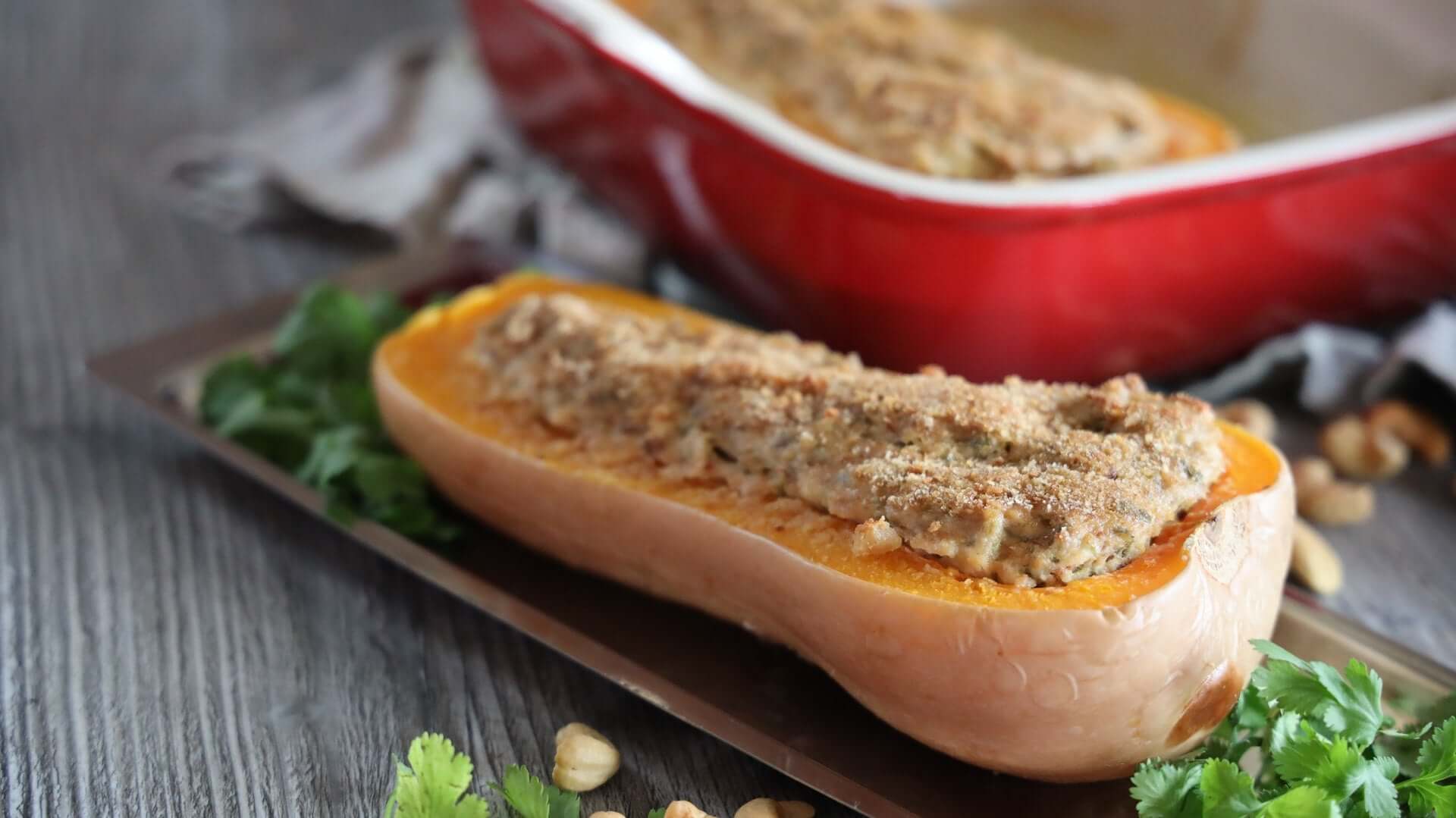
Inhaltsverzeichnis
Käse ersetzen – Was du wissen solltest & welche Basis-Zutaten du brauchst, um vegane Käsealternativen zuhause herzustellen
Natürliche Fleischalternativen? Check. Hafermilch einfach zuhause selber machen? Check. Ei-Geschmack durch Kala Namak ersetzen? Check. Aber was ist mit Käse?? Gibt es auch hier Alternativ-Lebensmittel, die an den Geschmack und die Konsistenz von Käse herankommen? Dieser Frage wollen wir heute auf den Grund gehen.
Weshalb veganer Käse sinnvoll ist
“Auf Käse könnte ich einfach nicht verzichten!” – Für viele Menschen ist genau das einer der Gründe, wieso sie sich nicht vorstellen können, sich vegan zu ernähren. Und auch ich gebe zu, dass ich mich lange schwer damit getan habe, auf Käse zu verzichten. Käse ist vielfältig, was Konsistenz, Verwendung und die Intensität des Geschmacks angeht – und einfach lecker.
Wenn man sich jedoch vor Augen ruft, wie Käse hergestellt wird und welches Leid mit der Produktion von Käse einhergeht, sieht das Ganze schon anders aus. Denn Käse ist im Endeffekt ein Milchprodukt, das aus Kuh-, Schafs- oder Ziegenmilch hergestellt wird. Und genau diesen Punkt – dass die Herstellung von Käse die Gewinnung von Milch voraussetzt – scheinen viele zu vergessen. Das macht den Verzehr von Käse genauso unethisch wie den Konsum von Milch.
Um es kurz zu machen: Die Milchkühe werden zunächst künstlich befruchtet. Nach der Geburt und kurz darauf folgenden Trennung von ihrem jungen Kalb dienen die Kühe nur noch als lebendige Milchmaschinen. Das durchgehende Melken verursacht nicht selten schlimme Entzündungen und Erkrankungen. Als ob das nicht schon schlimm genug wäre, werden die jungen Kälber – sofern ihnen nicht dasselbe Schicksal droht, wie ihren Müttern – geschlachtet und zu Kalbfleisch verarbeitet.
Neben diesem ethischen Grund, auf Käse und andere Milchprodukte zu verzichten, gibt es natürlich noch viele weitere Gründe für eine pflanzliche Ernährungsweise. Aber das ist eine andere Geschichte… :-)
Was die Herausforderung bei der Herstellung von Käseersatz ist
Käse besteht zu einem Großteil aus Milcheiweiß und tierischen Fetten. Durch die Variation verschiedener Teilprozesse wie die Reifung oder das Verhältnis zwischen Fett und Wasser entstehen verschiedenste Konsistenzen und Geschmacksrichtungen: Von Frischkäse und Schnittkäse über Salzlakenkäse wie Feta bis hin zu Mozzarella und Hartkäse. Genau diese Vielfältigkeit macht Käse so beliebt.
Leider liegt hier auch die größte Schwierigkeit für vegane Ersatzprodukte. Diese Vielfältigkeit stellt hohe Anforderungen an die Käsealternativen. Zwar gibt es mittlerweile eine ganze Menge verschiedener veganer Ersatzprodukte. Trotzdem ist es nach wie vor schwierig, beispielsweise einen “ganzen” Gouda oder Camembert nachzuahmen.
Die pflanzlichen Alternativen zu Käse werden meist auf Basis von Nüssen, Hülsenfrüchten und Kernen produziert, z.B. aus Mandeln, Cashewkernen oder Soja. Denn die liefern Fett, einiges an Eiweiß und können vielseitig verarbeitet werden. Was dann aber noch fehlt ist der typisch würzige Geschmack von Käse. Hierfür werden insbesondere pikante Gewürze wie Paprika, Zwiebelpulver und Senf eingesetzt.
Glücklicherweise steigt das Angebot – natürlich auch durch die immer größer werdende Nachfrage – der veganen Käsealternativen deutlich an. So sind mittlerweile schon pflanzliche Alternativen zu Frischkäse, Parmesan, Pizza-Streukäse, Feta, und natürlich Scheibenkäse erhältlich. Diese findet man in gut sortierten Supermärkten, Bioläden und auch in einigen Reformhäusern.
Übrigens ist veganer Käse oftmals gesünder als herkömmlicher Käse, denn die pflanzliche Alternative ist weniger sauer und weist bessere Fettsäuremuster auf. Das Ganze variiert aber selbstverständlich je nach Produkt, Inhaltsstoffen und Zusammensetzung sowie Verarbeitung der Zutaten.

Photo by Megumi Nachev on Unsplash
Wie du veganen Käse zuhause herstellen kannst – Mit diesen 3 Basis-Zutaten
Die veganen Käsealternativen müssen nicht immer aus dem Supermarkt kommen. Auch zuhause lässt sich pflanzlicher Käse herstellen. Das ist oft sogar einfacher, als man denken würde. Im Internet findest du eine Vielzahl an Rezepten, und auch auf unserem Blog findest du hier ein Rezept für einen veganen Käsedip!
(Um auch in Zukunft nichts mehr zu verpassen, trag dich gerne in unseren Blog-Newsletter ein – dafür einfach bis ans Ende dieser verlinkten Seite scrollen und Name sowie E-Mail-Adresse hinterlegen ☺).
Die Grundzutaten für die pflanzlichen Käsezubereitungen sind im Grunde immer dieselben: Cashewkerne, Hefeflocken und Mandelmus.
Cashewkerne
Käse hat ja häufig eine nussige Note. Da liegt es nicht fern, Käse auf Basis von Nüssen nachzuahmen. Besonders gut eigenen sich dafür Cashewkerne. Aber nicht nur der Geschmack, sondern auch die Konsistenz und die Verarbeitungsmöglichkeiten von Cashews überzeugen. Im Gegensatz zu anderen Nüssen haben Cashews einen eher milden Eigengeschmack. Wenn gewünscht, kann dieser mit ein paar Gewürzen einfach aufgepimpt werden. Ein weiterer Vorteil von Cashewnüssen ist ihre von Natur aus cremig-weiße Färbung. Diese eignet sich besonders zur Nachahmung von hellen Käsesorten.
Wer Käseersatz mit Cashews herstellen möchte, sollte über einen guten Mixer verfügen. Denn damit steht und fällt, wie cremig das Endprodukt ausfallen wird. Auch wichtig ist, dass die Kerne vorher in Wasser eingeweicht wurden, denn erst dann lassen sie sich wirklich gut verarbeiten.
Es gibt mehrere Möglichkeiten, um Cashewkerne einzuweichen. Auf Nummer sicher geht man, indem man die Cashewkerne über Nacht in warmem Wasser einweicht. Wer nicht so viel Zeit zur Hand hat, kann sie aber auch ein paar Stunden vorher einweichen oder sie sogar für ca. 10 Minuten in Wasser aufkochen.
Hefeflocken
Eines der Lebensmittel, die ich so schnell nicht mehr missen möchte 😄. Denn für mich kommt nichts so sehr an den Geschmack von “echtem” Käse, wie das Aroma von Hefeflocken. Dieser würzig-deftige Umami-Geschmack entsteht durch die in Hefeflocken enthaltene Glutaminsäure.
Anders als bei Trockenhefe und frischer Hefe sind die Hefepilzzellen, die in Hefeflocken enthalten sind, inaktiv. Die Zugabe von Hefeflocken zu einem Gericht führt also nicht dazu, dass der Teig aufgeht. Stattdessen werden sie vielmehr als Bindemittel und aufgrund ihres Geschmackes verwendet.
Es stimmt zwar, dass Hefeflocken viele Vitamine und Spurenelemente enthalten, was erst einmal gut ist. Jedoch nimmt man Hefeflocken normalerweise in so geringen Mengen zu sich, dass die “Wirkung” der Inhaltsstoffe von Hefeflocken nicht so außerordentlich ist, wie es manchmal kommuniziert wird.
Hefeflocken werden meist in 200g-Dosen oder -Tüten verkauft. Mittlerweile gibt es würzige und süße Varianten. Die würzige Variante enthält reine Hefeflocken (manchmal angereichert mit Vitaminen) und ist für herzhafte Speisen geeignet. Zur süßen Variante werden süße Zutaten wie Molkepulver, Blütenpollen oder Honig beigemischt, diese kann man dann beispielsweise ins Müsli geben. Wer Hefeflocken zur Herstellung von veganem Käseersatz verwenden möchte, sollte also beim Kauf darauf achten, zur würzigen Version zu greifen.
Die Flocken können pur (z.B. als Parmesan-Ersatz) verwendet werden oder zum fertigen Gericht hinzugegeben werden, um den käsigen Geschmack zu erzeugen. Generell sollten Hefeflocken eher nicht mitgekocht werden, da die B-Vitamine teilweise hitzeempfindlich sind.
Mandelmus
Auch das ist so ein Lebensmittel, das ich mir aus meinem Vorratsschrank gar nicht mehr wegdenken kann. Mandelmus ist vielseitig einsetzbar; ich verwende es vor allem im Porridge und zum Backen. Leider ist Mandelmus, wenn man es im Laden kauft, ziemlich teuer. Es lässt sich aber auch zuhause selbst herstellen. Ich persönlich muss zugeben, dass ich mich noch nicht daran versucht habe (steht aber definitiv auf meiner Liste!).
Aber zurück zum eigentlichen Thema:
Denn Mandelmus lässt sich auch als Käseersatz verwenden. Es wird besonders gern zum Überbacken verwendet, z.B. auf Aufläufen oder Pizza. Wenn es ganz schnell gehen muss, kann man es pur vor dem Überbacken über das Gericht geben.
Wer ein bisschen mehr Zeit hat, kocht Wasser mit etwas Mehl auf, bis eine dickliche Masse entsteht. Anschließend werden je ein bis zwei EL Mandelmus und Hefeflocken untergerührt. Abgeschmeckt wird das Ganze mit Salz und Pfeffer – Voilà, veganer Käseschmelz!
Das Schöne an all diesen Zutaten ist, dass man sie gut lagern kann. Dadurch muss man nicht jedes Mal aufs Neue in den Supermarkt rennen, wenn man Käseersatz herstellen möchte. Auch die restlichen Zutaten zur Herstellung von pflanzlichem Käse, wie Pflanzenmilch, Mehl oder Gewürze, hat man normalerweise bereits zuhause. Du kannst also direkt loslegen! :)
Wenn du noch mehr über die Themen Ernährung, Achtsamkeit, Familie & Schwangerschaft oder Nachhaltigkeit erfahren möchtest, schaue doch mal hier vorbei.

Foto von Ponyo Sakana von Pexels



























Leave a comment
This site is protected by hCaptcha and the hCaptcha Privacy Policy and Terms of Service apply.